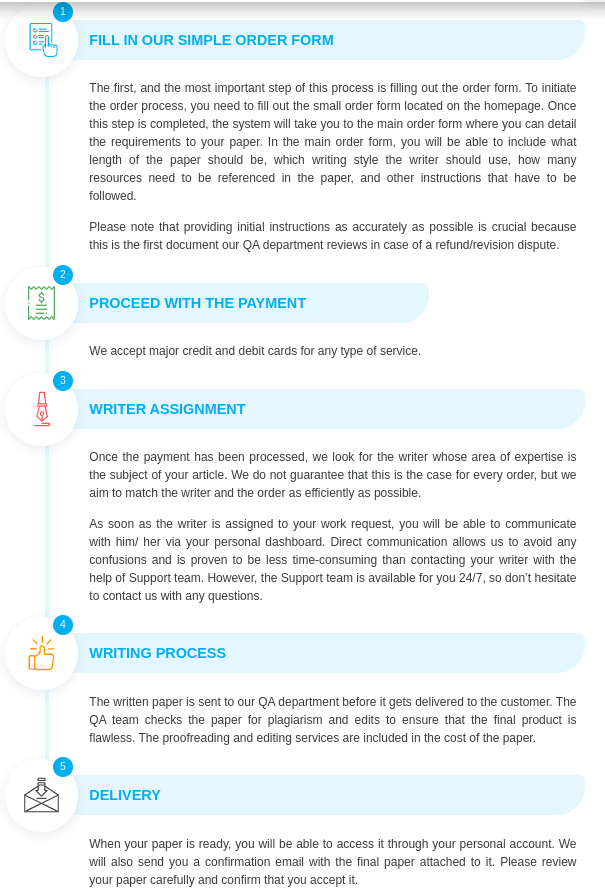Mabel Johnson ihuman Case Study
Assignment
History of Present illness (HPI) – the patient is an 83-year old obese female with underlying hypertension, hyperlipidemia, and chronic renal disease presenting today for evaluation of chronic worsening knee pain. The pain begun five years ago and although it’s on both knees, the pain in the right knee is worse than in the left knee and radiates down her leg towards the ankle. She also reports of knee swelling and occasional pain and swelling in her fingers. In the morning, she reports knee stiffness lasting 15-20 minutes. She describes the pain in her knees as stiff and achy that worsen when she bends or presses on them. The pain in her fingers hurt more in cold weather although it is mildly relieved with acetaminophen. She rates the intensity of the knee pain as 4 or 5 out of 10 when less severe or 7 or 8 out of 10 when most severe. She denies knee trauma, fevers, or chills.
Subjective Data
Review of systems (ROS)
General: patient denies chills, fevers, sore throat, worsening cough, changes in appetite, or weight.
HEENT/Neck: patient denies headache, dizziness, trauma to head, vision loss, hearing loss, ear pain, difficulty swallowing, recurrent nosebleeds, nasal discharge, or loss of smell.
Cardiovascular: patient reports inability to participate in sports or physical activity due to knee and finger pain and swelling, denies palpitations, chest pain, history of murmurs, swelling in face, lower or upper extremities.
Respiratory: patient denies exposure to secondhand smoke at work or home, denies shortness of breath (SOB) with or without activity, denies cough, wheezing, recent or chronic respiratory infections.
Gastrointestinal: patient denies vomiting, diarrhea, nausea, constipation, abdominal cramping, abdominal pain, tarry/black stools, changes in appetite, or blood in stool.
Genitourinary: patient denies flank pain/lower back pain, urgency, frequency, pain or burning with urination, foul odor in urine, or blood in urine.
Neurologic: patient denies involuntary movement, muscle spasms, loss of memory, headaches, loss of consciousness, fainting, dizziness, numbness or tingling in lower or upper extremities or face.
Integumentary/Breast: patient denies open sores or wounds on trunk, upper, or lower extremities, she reports weaker than usual nails, denies excessive itching or excessive sweating in armpits, feet, or palms of hand. She denies breast lumps or masses, or denies nipple discharge.
Psychiatric: patient denies feeling anxious, sad or blue, denies visual or auditory hallucinations, denies thoughts of inflicting self-harm, denies suicidal/homicidal ideations.
Endocrine: patient denies increased urination, denies excessive thirst, nails are brittle and break easily, denies excessive growth or loss of hair on arms, face, and legs.
Hematologic/lymphatic: patient denies prolonged healing from bruising or cuts, denies spontaneous bleeding or bruising, denies self or familial anemia, denies lack of energy, cold/blue lips, feet, or hands.
Allergic/Immunologic: patient denies known/unknown food, drug, or environmental allergies.
Past Medical History: patient had peptic ulcer disease (resolved), she has chronic kidney disease, hyperlipidemia, and hypertension.
Hospitalizations/Surgeries: patient denies hospitalizations for any acute or chronic illnesses, denies minor or major surgeries.
Preventive Health: patient is up-to-date with all immunizations and screenings.
Medications: patient takes amlodipine 10mg, lisinopril 10mg, simvastatin 20mg, hydrochlorothiazide 25mg and Protonix 40mg
Allergies: patient denies known/unknown food, drug, or environmental allergies.
Social History: patient denies alcohol use, denies tobacco use, denies recreational/illicit drug use.
Family History: mother had arthritis of the knees, doesn’t recall about her father’s and grandparents health.
Objective Data
General: patient presents for evaluation in the clinic independently. She is AOX4, has a right-sided limp, and in no respiratory distress.
HEENT/Neck: Head: atraumatic, normocephalic. Eyes: PERRLA, pink conjunctivae, no ptosis, swelling, or erythema. There’s arteriovenous nicking on fundoscopic exam. Ears: no edema or discharge, no purulence, discharge, or scarring. Hearing is bilaterally intact. Normal external auditory canals without cerumen or erythema. Nose/Mouth/Throat: no tenderness or edema over maxillary or frontal sinuses, no polyps or discharge, no swelling in turbinates, pink & symmetrical tongue, tonsils without exudates, clear mucosa. Neck: trachea is midline and freely mobile, full range of motion (FROM), no carotid bruits, no JVD.
Cardiovascular: normal heart sounds S1 & S2, heartrate 80 bpm, +edema in hands, face, upper or lower extremities, no gallops, murmurs, or rubs, JVD less than 3cm above sternum.
Chest/Respiratory: chest is symmetrical, no palpable masses or lumps, bilaterally clear lung sounds in all lobes, no auscultated rales, wheezing, rhonchi, or cackles, RR of 14bpm.
Musculoskeletal: patient can differentiate between dull, light, sharp touch on lower and upper extremities, DTRs intact, no sensory deficits, normal muscle bulk and tone, no muscle rigidity, no localized tenderness of the spinous processes or pelvic structures, limited ROM in knees, limited ROM in fingers, slightly diminished ability to extend and flex at the hips, patient cannot completely straighten her knees which can only be flexed to 900, weak quadriceps.
PROBLEM STATEMENT
Ms. Mabel Johnson is a 76-year old obese woman with a significant history of chronic renal disease, hypertension, and a peptic ulcer due to ibuprofen use who presents with progressive knee pain, right worse than left, with a small right effusion. The knee pain is worse in the morning as is her finger pain, but gets better with mild movement. Her knees have limited range of motion and weight bearing exercises makes the knee pain worse, such that the patient is restricting daily living activities. The patient’s hypertension is not currently controlled inspite of patient stated medication compliance.
Primary Diagnosis and ICD-10 code:
- Knee Osteoarthritis (OA) ICD10: 9 – OA can be classified as either primary or secondary. It is a form of degenerative joint disease primarily characterized by progressive wear and tear of the joint. The risk factors of OA are; muscle weakness, obesity, injury to a joint, and gender (female) (Chen et al., (2017). OA has been attributed to inflammatory markers and proteases continuously destroying joint articular cartilage, inflammation and hypertrophy of the synovium leading to restriction of movement, stiffness, and joint pain. In the advanced stages, patients will report muscle weakness and loss of balance (Chen et al., (2017). OA can either by monoarticular or polyarticular and often affects the knee joint, lumbar, hip joint, proximal and distal interphalangeal joints, and the lower cervical spine.
Differential Diagnoses:
- Rheumatoid Arthritis (RA), Unspecified ICD10-9- RA is an autoimmune disorder of the joints involving inflammatory arthritis and extrarticular joints. It often begins with the small joints and progresses to proximal joints. Its associated risk factors include; tobacco smoking, obesity, genetics, and family history of RA (Aletaha & Smolen, 2018). The history and physical exam will be significant for joint pain and stiffness (early morning), and swelling of the joint. Besides, its onset is slow and insidious. The affected joint has a limited range of motion (ROM), is painful reduced grip strength, and carpal tunnel syndrome symptoms.
- Septic Arthritis ICD10-M00.849-septic arthritis is often monoarticular but can also involve more than one joint (polyarticular). It has an infective etiology and the implicated organisms include staphylococcus aureus, salmonella, streptococcus pneumoniae Neisseria gonorrhea, and pseudomonas (Long, Koyfman & Gottlieb, 2019). The physical exam may be significant for fevers, joint pain, and swelling. The knee, ankle, hip, and shoulder joints are the most affected.
- Gout, Unspecified ICD10-9-in gouty arthritis, there is deposition of MSU (monosodium urate crystals) in tissues as a result of hyperuricemia. Its associated risk factors include; obesity, alcohol, gender (male), genetics, medications/drugs, advanced age, and diet (purine diet). Patients with/at high risk of gouty arthritis may have underlying comorbidities such as hypertension, hyperlipidemia, diabetes mellitus, or metabolic syndrome (Ragab, Elshahaly & Bardin, 2017). Among patients with renal disease, there is a decreased rate of excretion of urate which often leads to gouty attacks. It mostly affects the lower extremities (first metatarsophalangeal joint) and has monoarticular involvement. However, there may also be involvement of the subtalar, knee, ankle, and talar joints (Ragab, Elshahaly & Bardin, 2017). The pain has an acute onset, while flares are common during the night as opposed to early morning. The physical exam will be significant for a red, tender, warm, and swollen joint.
Management Plan
Medications
Betamethasone acetate 0.25-2 mL intra-articular for 12 months for the pain and swelling (Brophy & Fillingham, 2022).
Non-pharmacological
Consider mild-moderate aerobic and resistance training exercises for weight reduction, to improve strength, physical function, and reduce pain (Brophy & Fillingham, 2022).
Avoid activities that can worsen, increase, or exacerbate pain
Additional tests needed
None
Referrals
Orthopedic surgeon consult for possible knee replacement (Brophy & Fillingham, 2022).
Ophthalmologist consult for further evaluation and management of hypertensive retinopathy.
Follow-up instructions
Seek immediate care in case of worsening pain or new onset fevers, joint redness/swelling.
Return for follow-up in 2 weeks.
Reference
Brophy, R. H., & Fillingham, Y. A. (2022). AAOS clinical practice guideline summary: management of osteoarthritis of the knee (nonarthroplasty). JAAOS-Journal of the American Academy of Orthopaedic Surgeons, 30(9), e721-e729. https://doi.org/10.5435/JAAOS-D-21-01233
Our expert nursing writers at nursingassignmentservice.com can do your Mabel Johnson ihuman Case Study, place your order here.




